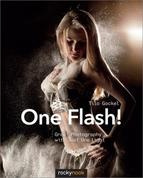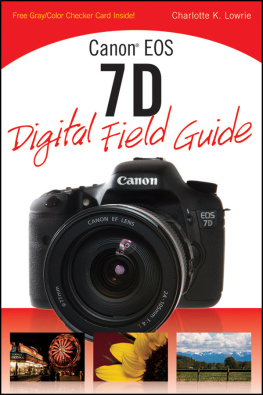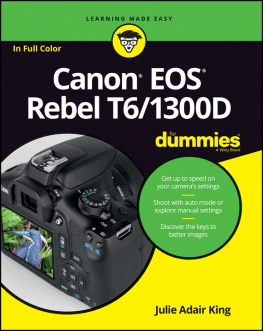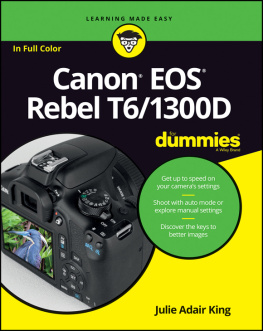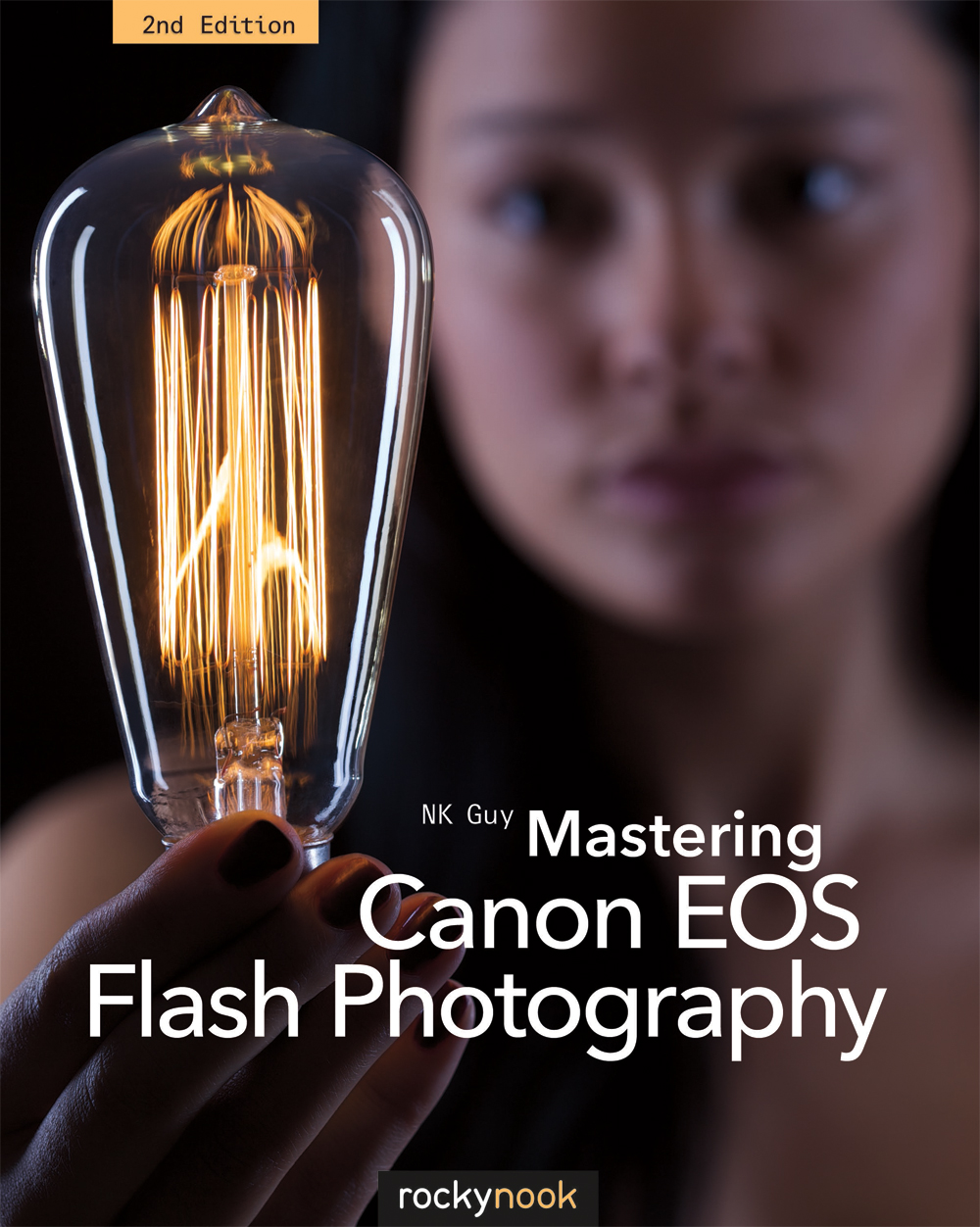
NK Guy Born in Montreal during the first snowfall of winter, NK Guy is a Canadian writer and photographer. Along with Art of Burning Man from Taschen, which is a distillation of the 65,000 photos he took at the Burning Man art festival from 1998 to 2014, he is the author of The Photographers Dictionary (Rotovision, 2008) and The Lens (Rocky Nook, 2012). He also created photonotes.org for photographic education, and burningman.com .
There is no substance whatsoever to the scurrilous rumors that his true name is a word of ancient power, that dark forces were raised by profane and bloody ritual during the writing of this book, or that the text was in fact composed by a decaying golem who would repeatedly croak, American spelling! in a voice of dust and despair.
Guy lives in London, England.
NK Guy
Mastering Canon EOS Flash Photography

Mastering Canon EOS Flash Photography, 2nd Edition
NK Guy
photonotes.org
Editor: Joan Dixon
Project manager: Lisa Brazieal
Marketing: Jessica Tiernan
Layout and type: Petra Strauch
Cover design: Helmut Kraus, www.exclam.de
ISBN: 978-1-937538-72-9
2nd Edition (1st printing, February 2016)
2016 NK Guy
All images NK Guy unless otherwise noted
Rocky Nook Inc.
802 E. Cota Street, 3rd Floor
Santa Barbara, CA 93103
U.S.A.
www.rockynook.com
Distributed in the U.S. by Ingram Publisher Services
Distributed in the UK and Europe by Publishers Group UK
Library of Congress Control Number: 2015946795
All rights reserved. No part of the material protected by this copyright notice may be reproduced or utilized in any form, electronic or mechanical, including photocopying, recording, or by any information storage and retrieval system, without written permission of the publisher.
Many of the designations in this book used by manufacturers and sellers to distinguish their products are claimed as trademarks of their respective companies. Where those designations appear in this book, and Rocky Nook was aware of a trademark claim, the designations have been printed in caps or initial caps. All product names and services identified throughout this book are used in editorial fashion only and for the benefit of such companies with no intention of infringement of the trademark. They are not intended to convey endorsement or other affiliation with this book.
While reasonable care has been exercised in the preparation of this book, the publisher and author assume no responsibility for errors or omissions, or for damages resulting from the use of the information contained herein or from the use of the discs or programs that may accompany it.
This book is printed on acid-free paper.
Printed in the U.S.A.
Important Safety Note About the Cover Photo
The cover shot was taken using a British bayonet-style light bulb. These bulbs have two electrical contacts on the base: the metal cap isnt part of the circuit and carries no current. This is how I was able to send power through the bulb (through a concealed wire, with insulated connections) while it was in the models hand. This would not be possible, and would be very dangerous with an Edison screw-type bulb, since the threaded metal cap forms part of the electrical circuit.

For Dad. Who taught me that to find a photograph, youve sometimes got to wait.
Table of Contents

1 Introduction
Fire Spinning. A relatively long shutter time recorded the whirling loops of flame of the burning fire staff. Two flash units, a 420EX on the ground to camera left as key, and a 580EX II on-camera as fill and E-TTL master, have frozen the action. Queen Elizabeth Theatre undercroft, an area thats become an unofficial skater park. London, England. EOS 5D, 1.6 seconds at f/4.5, ISO 100, 30mm.
This is an example of slow shutter sync flash can be used to freeze foreground motion while exposing the background.
The invention of electronic flash and its subsequent miniaturization and automation completely transformed photography. The pioneers of photography could only shoot in sunlight, but today reliable and portable light sources are available to everyone making photography possible even in the most dimly lit settings.
Electronic flash was first used in the 1930s to freeze motion and illuminate dark scenes, but today its used for all kinds of photography. From the creative to the mundane, from supplementing daylight to designing complex scenes with multiple light sources, theres a flash-based solution for every situation.
But flash photography can be an artistic and technical challenge. When most people hear the word flash, they think of harshly lit snapshots: friends in a dark cavern of a restaurant or living room, staring into the lens like a deer in the headlights. This represents the typical experience of flash photographybut it doesnt have to be that way.
So the basic question is, how to go from this...

... to this?

Both photos were taken with the same camera, the same lens, the same focal length, and the same model. Everything was identicalexcept that the first photo was taken using the cameras built-in flash, while the second photo was taken using a two-light studio setup.
This book will help you master the use of flash, covering everything from Canons Speedlite flash system to off-camera portable flash and professional studio lighting. It begins with the fundamentals of flash metering technology, discusses key concepts, documents the various features and functions available with EOS equipment, explores flash accessories and studio equipment, and concludes with a review of basic lighting techniques. Much of this material is relevant to users of any camera system, but most of the details of automated flash (TTL and E-TTL) are specific to Canon EOS.
Also covered is the growing field of off-camera flash, whether through portable battery units or traditional studio lighting. For years, off-camera flash was seen as too daunting for all but professional photographers, but the combination of digitals immediacy and ease of use and popular websites such as David Hobbys Strobist.com , have brought off-camera flash to a whole new audience.
Finally, this book is intended to be as thorough as possible. Every item was tested and evaluated before being includedthis is no mere advertising brochure. Products are described as honestly and fairly as possible. Unfortunately, a few popular product lines are not included because some manufacturers and distributors declined to participate.
About this book
This book is structured in three separate sections. Part I explains the technology of flash photography and how it works. Part II deals with the nitty-gritty of the equipment in finer detail. Part III offers some lighting techniques to help take great-looking photographs.


